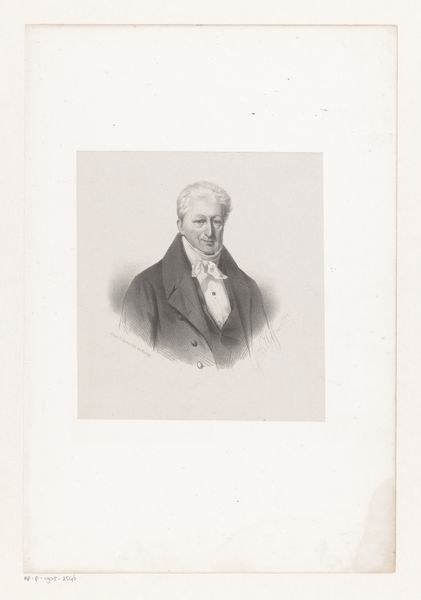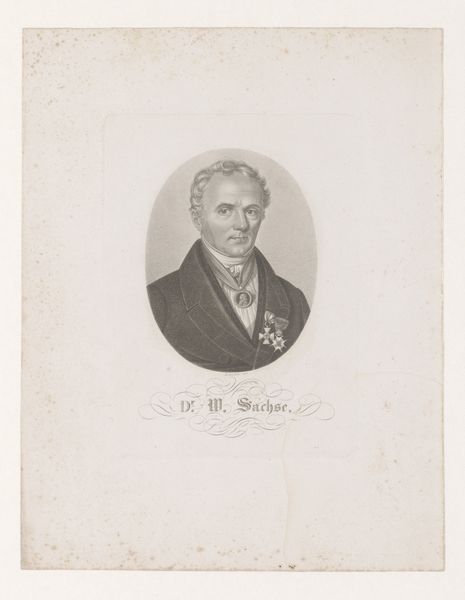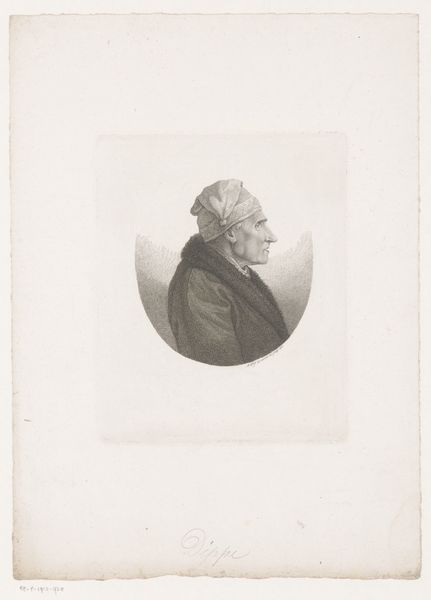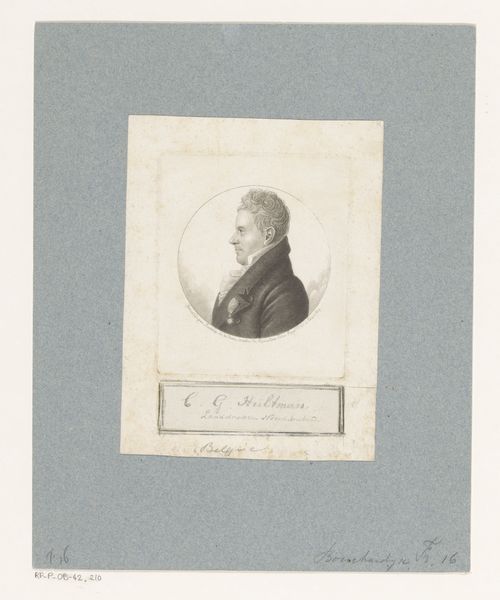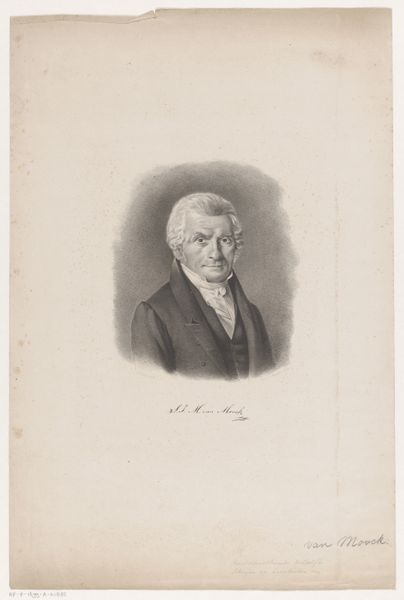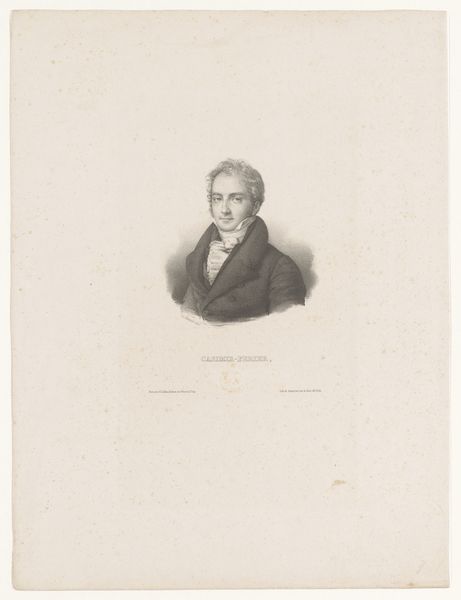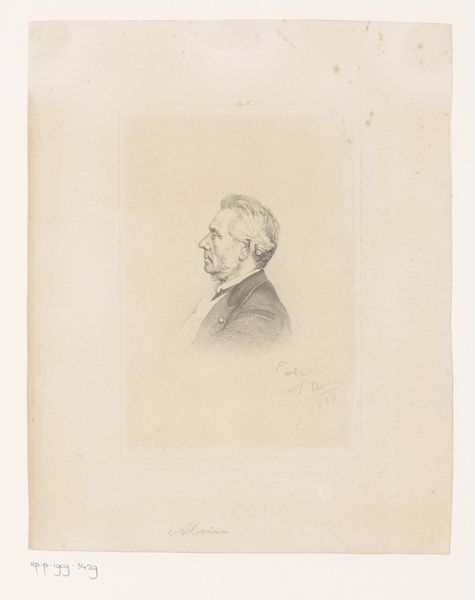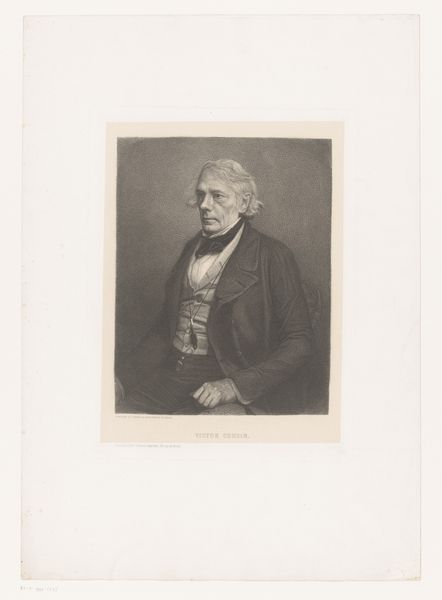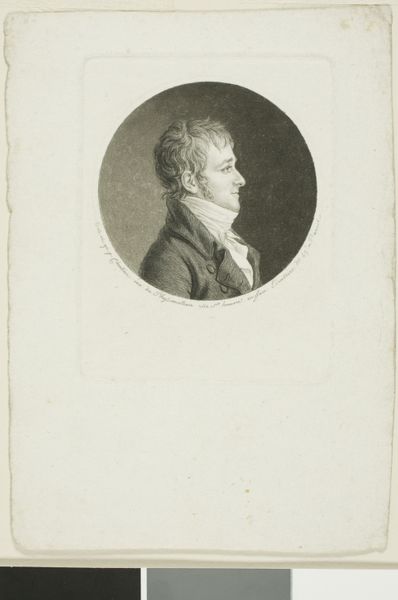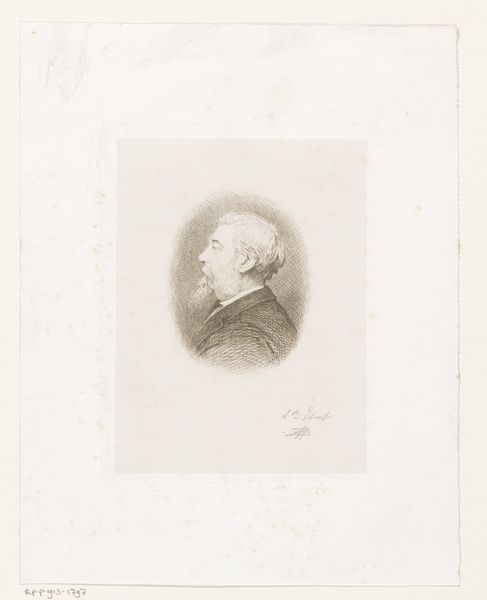
drawing, pencil
#
portrait
#
drawing
#
romanticism
#
pencil
#
academic-art
Dimensions: height 495 mm, width 322 mm
Copyright: Rijks Museum: Open Domain
Editor: This is Petrus Franciscus Greive’s “Portrait of Ludwig Gottlieb Portman,” created between 1822 and 1845 using pencil. It has such a stern, almost melancholic feeling to it. What do you see in this piece? Curator: I see more than just melancholy; I see the weight of 19th-century societal expectations, particularly for men. Look at the formality of his attire, the deliberate composition, and the absence of any contextual background beyond a sort of halo. Do you think this work presents an honest portrayal, or one carefully constructed to convey power? Editor: I think constructed power is likely at play here. He seems very intentionally posed, trying to look important. What kind of power dynamics might be relevant in understanding this work? Curator: Consider the social and political climate of the time. We're in the midst of immense change, yet traditional hierarchies persist. Who were men like Ludwig Portman representing? What did their representation signify to those viewing this portrait, especially given who likely had access to portraiture at this time? How does gender, class, and perhaps even emergent national identity intertwine to create the image presented? Editor: That’s fascinating. I never really thought about portraits as political statements before, but seeing it this way, it makes complete sense! Curator: Exactly. These portraits aren't simply records of appearance; they are carefully crafted statements reflecting and reinforcing social structures. We can think about how representation is also inherently a power dynamic, not merely an artistic choice. Editor: This has really broadened my perspective. I’ll definitely look at portraits differently from now on. Thank you! Curator: My pleasure! Looking beyond the surface, engaging with the social undercurrents of an artwork – that's where true understanding begins.
Comments
No comments
Be the first to comment and join the conversation on the ultimate creative platform.
